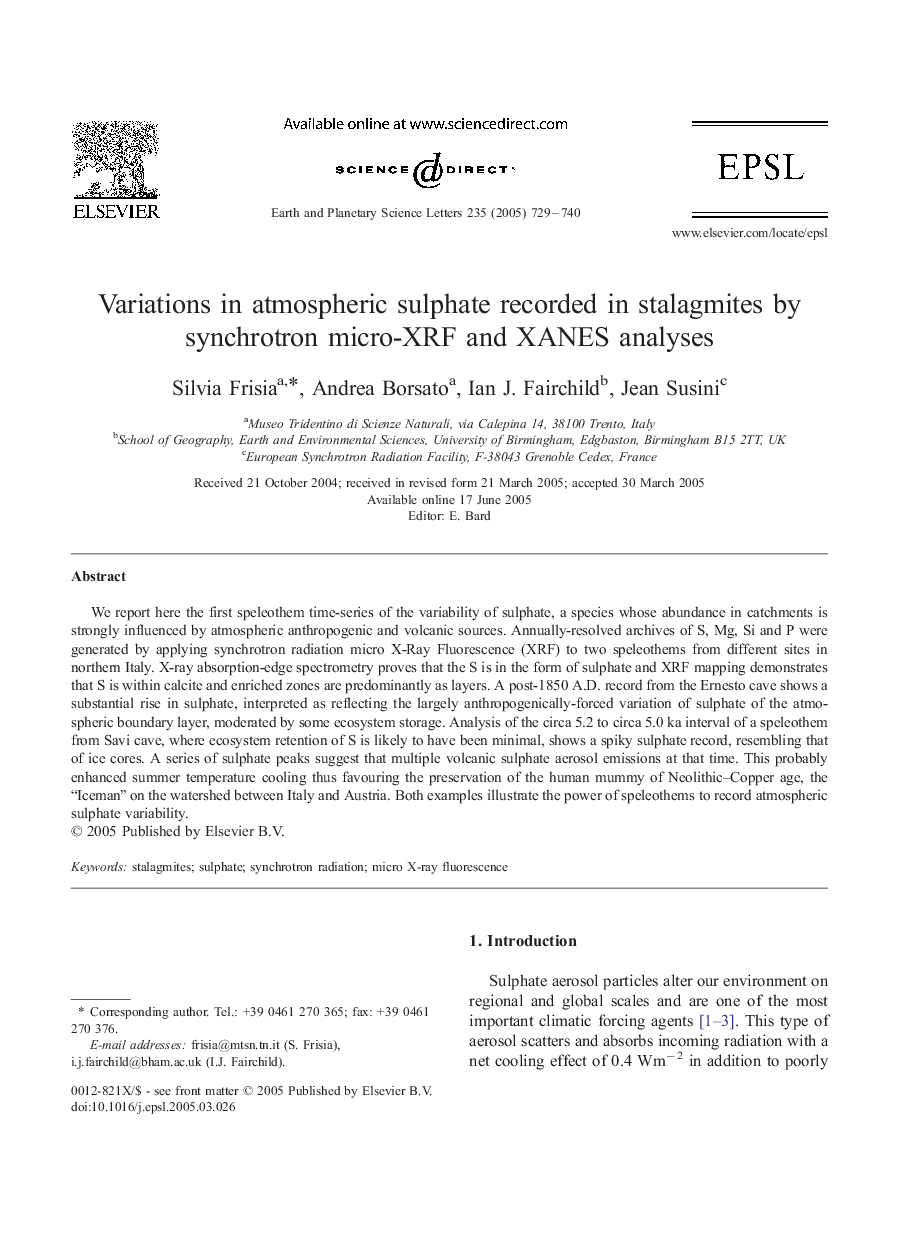| Article ID | Journal | Published Year | Pages | File Type |
|---|---|---|---|---|
| 9522223 | Earth and Planetary Science Letters | 2005 | 12 Pages |
Abstract
We report here the first speleothem time-series of the variability of sulphate, a species whose abundance in catchments is strongly influenced by atmospheric anthropogenic and volcanic sources. Annually-resolved archives of S, Mg, Si and P were generated by applying synchrotron radiation micro X-Ray Fluorescence (XRF) to two speleothems from different sites in northern Italy. X-ray absorption-edge spectrometry proves that the S is in the form of sulphate and XRF mapping demonstrates that S is within calcite and enriched zones are predominantly as layers. A post-1850 A.D. record from the Ernesto cave shows a substantial rise in sulphate, interpreted as reflecting the largely anthropogenically-forced variation of sulphate of the atmospheric boundary layer, moderated by some ecosystem storage. Analysis of the circa 5.2 to circa 5.0 ka interval of a speleothem from Savi cave, where ecosystem retention of S is likely to have been minimal, shows a spiky sulphate record, resembling that of ice cores. A series of sulphate peaks suggest that multiple volcanic sulphate aerosol emissions at that time. This probably enhanced summer temperature cooling thus favouring the preservation of the human mummy of Neolithic-Copper age, the “Iceman” on the watershed between Italy and Austria. Both examples illustrate the power of speleothems to record atmospheric sulphate variability.
Related Topics
Physical Sciences and Engineering
Earth and Planetary Sciences
Earth and Planetary Sciences (General)
Authors
Silvia Frisia, Andrea Borsato, Ian J. Fairchild, Jean Susini,
